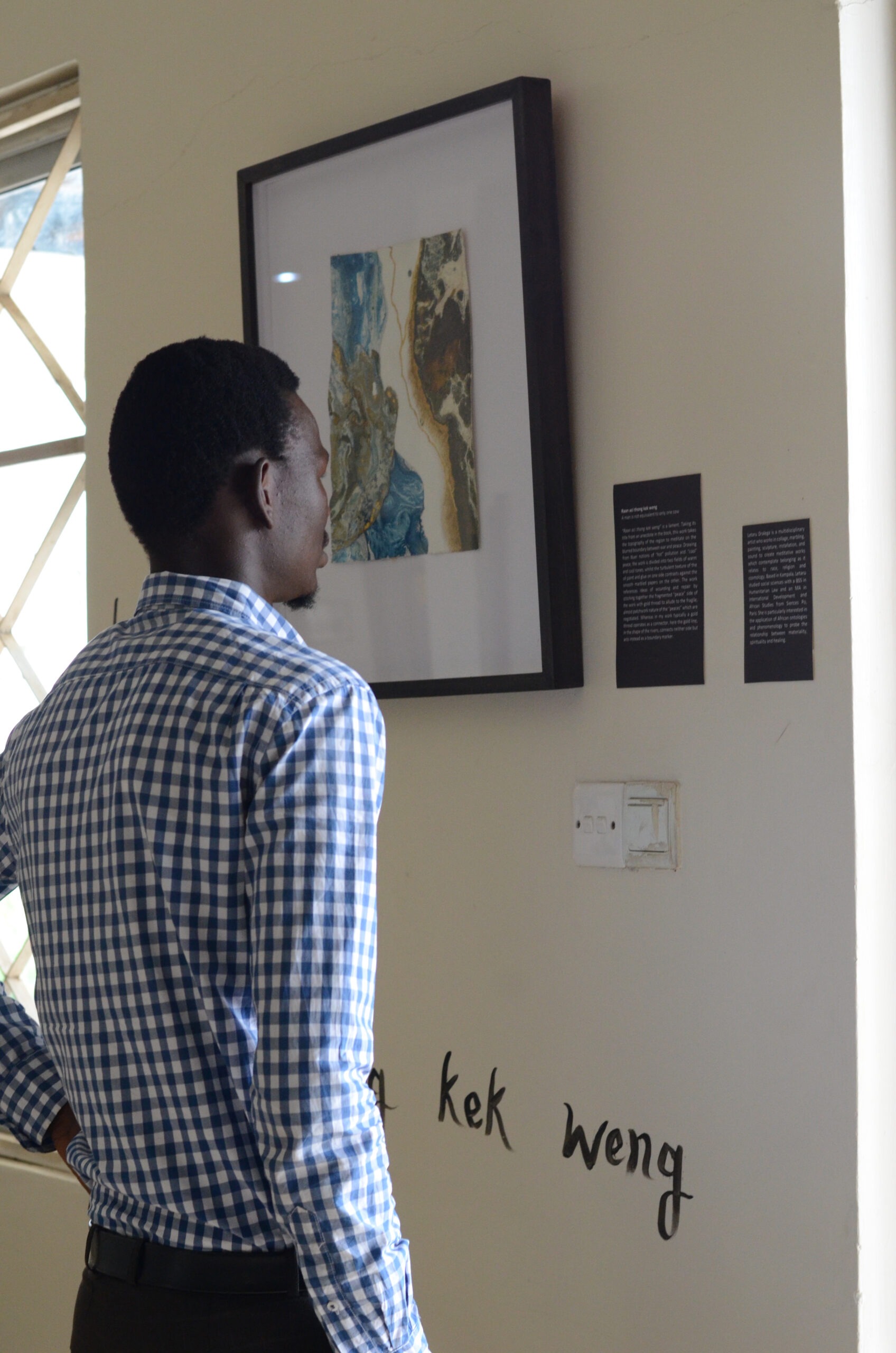Re-Storying South Sudan
Safety and Storytelling, the exhibition on art, heritage and protection tried to reframe what has been a tried narrative about that region of Africa. Artworks tried to imagine a different past and future in area often defined on humanitarian terms of suffering and violence. Yet it is not enough to just display and walk away. In this edition of brushes aside, Borderlands co-founder and chief curator, Kara Blackmore, reflects on the need for new narratives in the worlds youngest nation.
Putting for consideration that a brief exhibition could somehow shift the narratives of a nation is somewhat of a big ask. However, since South Sudan entered a civil war in 2013 – only two years after independence from Sudan – images of violence and suffering dominated perspectives of the new nation. Even as creatives returned from diasporas in Australia, Kenya, Uganda and the USA, little space has been given by the nation-building project to an artistic idea of the nation. While notions of the nation were not central to our curatorial mission, the work on power, place and protection were central.
New art commissions were paired with research and dialogue to work through the difficult idea of becoming something other than the image of violence that overwhelms popular imaginations. Artistic modes of photography, poetry, theatre, cartooning, carving, beading, embroidery, and collage insisted on a multiplicity of narratives. In these works, there are no peace doves like those found in NGO art commissions.
Borderland’s artist Letaru Dralega used proverbs and the symbol of the cow to bring a historical view on power negotiations. Her work, Raan aci thong kek weng (translated as ‘a man is not equivalent to only one cow’) instigated a significant base of discussion. The viewer is forced to zoom in on the detail of the work, tracing the landscape. Audience members debated the proverb, questioning its meaning.
Dralega also had her own queries when making the artwork. What archives does one use? How to represent authority without reproducing subjugation or fetishisation? Such queries are central to the idea of restorying in a context of representation where colonial archives and external authors dominate the material sources available to her from the Kampala studio. In Raan aci thong kek weng, the somewhat abstract background with the collaged foreground creates a tensions between materials, a roughness that implies this uneasy move through time and space.

The commission by members of the Hai Referendum women’s union sought to take evidence from stories and imprint them through a form of embroidery known as Milaya. Five individual textiles were made as a synergy between co-curators Likikiri Collective and artist James Aguer who helped render images from a series of Story Circles. The format of a story circle brings together a group of people in a kind of decolonial focus group that centres creativity and collectivity.
The art commission used transcripts of conversations with the Hai Referendum Women’s Union and to develop a visual narrative. It was at this point that the aid organisation impact on visual language was repeatedly revealed. For the women, there were ‘traditional’ images they stitched, like flowers, butterflies, cows, and other totemic animals. Yet, the idea of telling their stories of lived experience was not part of the Milaya work. What we found in the new commissions is that women have been able to use this form of embroidery to sustain themselves, to connect with families in diasporas, to feel protected. Similarly, the artworks were the most familiar to audiences visiting the show at the University of Juba, providing a tactile form of discussion.

During the Scenes and Zines dialogue event, artists discussed how to re-story given the challenges of freedom of expression. It is not only the hangover of aid and humanitarianism that compromises creative repertoires. Like many African nations, South Sudan is ruled by a group of elites, many are professional military men accustomed to giving orders and being obeyed. Critical artwork is therefore not allowed if it is questioning the highest levels of leadership. One cartoonist shared with audiences how he is able to use humour to take different approaches. Laughing at the condition, gives levity in a meaningful way. This approach, taken by other cartoonists globally is not just a coping mechanism but a strategy for shifting perspectives. He advised young creatives to look at the collective work citizens have to do and the shared responsibility that he points out in his work. Anonomysing power holders within his critiques not only keeps him safe but helps to distribute the ownership of solutions onto larger groups.

Overall this exhibition and the process of its making was a way for creative communities and critical thinkers to align in their efforts to look at how people protect themselves and others, often in spite of failed efforts for safety by peacekeeping missions or government mandated law enforcers. The briefness of the shows run is also a conscious effort to introduce a series of propositions that can be built upon, challenged and dismantled. For this type of creative becoming is the small grains of sand that mix in the mortar to build something new beyond symbols of suffering and violence.

